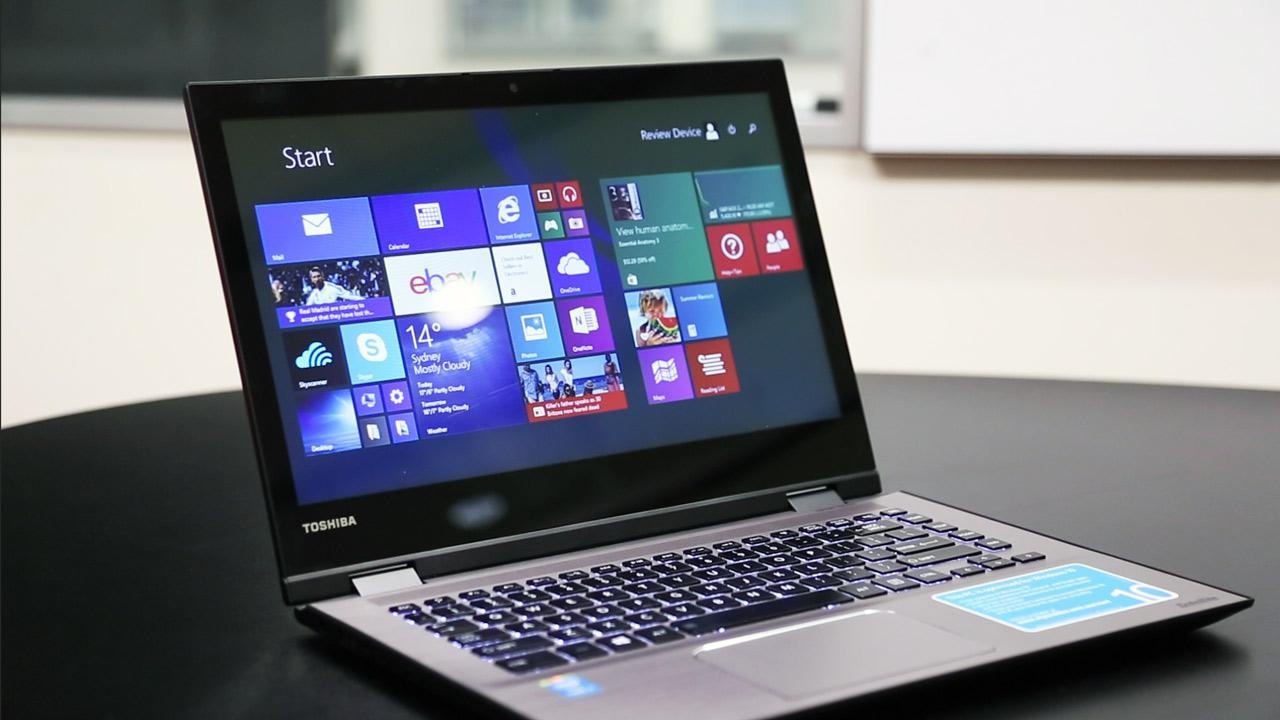Toshiba Radius L40W a big disappointment
This year marks 30 years since Toshiba produced its first modern-day laptop and since then the Japanese giant has gained a great reputation.

This year marks 30 years since Toshiba produced its first modern-day laptop and since then the Japanese giant has gained a great reputation for quality computers. Unfortunately, its latest effort — the Windows 10-ready Radius L40W — is a big disappointment.
A couple of years ago, we loved Toshiba’s Kira ultrabook with its 2K display, superb screen colours and lightweight aluminium design. Starting at $1799, it was a winner.
The L40W, Toshiba’s flagship notebook in its 2015 range which was launched locally in May, sports the same price tag as the Kira but the 5-in-1 14-inch convertible notebook fails to hit the mark on a number of fronts.
The display is hinged so you can rotate it 360 degrees. Apart from laptop mode, the display can be flat, facing away, inverted in tent mode, and a tablet of sorts.
It’s an awkward tablet because the screen and keyboard can’t be separated. So the keyboard sits underneath the screen with the keys facing downwards. That makes it uncomfortable on your lap and you can accidentally trigger the keys.
It’s also heavy for a tablet. At 2kg, the L40W is four times the weight of an Apple iPad Air.
The L40W does have a few positives, mainly cosmetic. It has an attractive look and the keyboard is backlit. The keys are well-spaced, albeit a tad small. Overall, the typing experience isn’t that bad.
You get 2 x USB3.0 ports. An HDMI out, a memory card slot and security card slot on one side, and a USB2.0 port, a power jack, and the obligatory headphone jack on the other.
But I am perplexed as to why Toshiba is persisting with USB2.0 port in a $1799 machine? They should all be USB3.0.
There’s also a curious Windows button on the left-hand side that switches from the standard desktop to Windows tiles mode. I don’t see the need for this when you have a Windows key on the keyboard.
The device has two microphones which Toshiba says will improve the performance of Microsoft’s Cortana personal assistant in interpreting speech.
Our L40W test unit runs Windows 8.1 so we couldn’t test Cortana. You need Windows 10 for that.
Sound from the Harman Kardon stereo speakers below the front grill is clear and loud. That’s one of its better features. I used the L40W as a personal notebook and it was fast and responsive. It is pretty much what you’d expect from a Core i7-powered notebook. And that’s the problem.
Given its $1799 price tag, you’d expect 2015-style innovation: maybe impressive battery life with new, energy-efficient chips, maybe a cutting-edge USB-C port for ultrafast data transfer, maybe a biometric fingerprint reader that eliminates passwords, or a cutting edge design such Dell’s XPS (2015) with its ultra-thin bezel.
But nothing stands out.
Compare that to another notebook we have here: Fujitsu’s Lifebook S935.
It has an embedded palm vein scanner for biometric identification, a smart card slot, LTE and an antiglare screen.
Given that the L40W’s ordinary 1366 x 768 pixel, 720p display doesn’t pull too much power, you’d think it could return exceptional battery life, but in my test, where I ran video at 75 per cent brightness, the notebook ran for six hours and 15 minutes.
Apple’s MacBook Air offers 9-12 hours battery life and Lenovo ThinkPad X250 is reported to last more than 15 hours.
As for the 14-inch, 720p display itself, it is well below full high-definition or the 2K definition quality you’d expect in a top-line notebook and incredibly reflective.
I also tested a feature called Peak Shift Control. The L40W can be set not to charge during hours of peak price power tariffs, even when plugged in.
You tell it the times and the hours you allow charging to occur. You also specify a cut-off point, so when the battery gets below that mark, charging occurs anyway. But when I tried this, it didn’t observe the cut-off point and the L40W nearly went flat even when plugged in.
My review unit had an Intel Core i7 5500U processor at 2.40 gigahertz, 8 gigabytes of DDR3 memory, on-board Intel HD5500 graphics, fast 802.11ac wireless and Intel WiDi.
In tests, Intel’s 5500 3D graphics scored 17.39 frames per second in Cinebench 15. It’s good for casual gaming and 4K video playback — but the display is not 4K capable. The CPU scored 285 cb which is at the lower end of the Core i7 range.
I conducted sequential read/write tests, transferring 9.83GB made up of 19 files to and from the notebook using USB3.0. It read at 99.66 megabytes per second and wrote at 95.87Mbps.
In all, the Toshiba Radius L40W is a highly priced mid-range laptop. It’s a convertible, sure but as the flagship of Toshiba’s new Australian range, it is a disappointing device.
Rating: 5/10
Price: $1799 for Core i7 model


